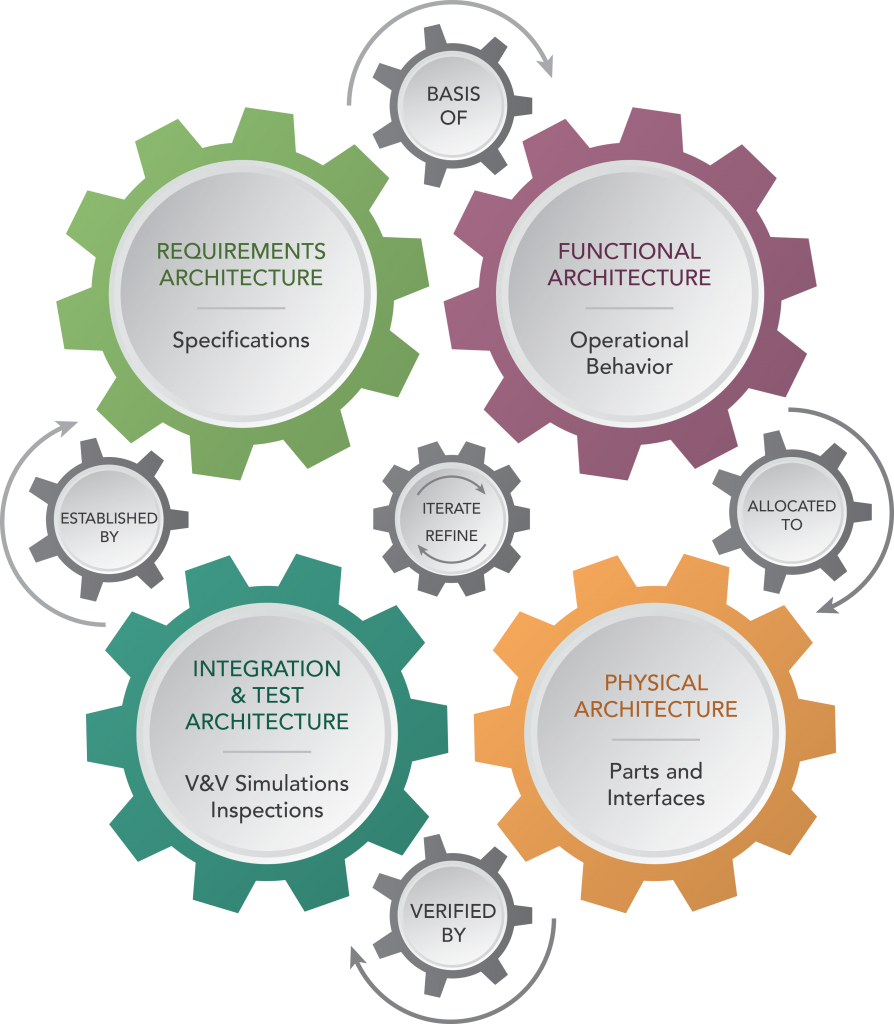MBSE – Application of digital tools to allocate and manage requirements, and design integration, analysis, qualification/certification and validation/verification through the entire product lifecycle.

MBSE allows engineers to capture, organize, and view information to support systems engineering activities. Each of the 4 architectures (gears) are part of the same model. Each architecture is interdependent, consistent and organized, improving the way Systems Engineering is conducted at Sandia.
Gears represent the 4 foundational architectures in Systems Engineering. The requirements architecture (customer specifications) is the basis of functional architecture. The functional architecture (behavior of the system) is then allocated to the physical architecture. The physical architecture (parts, interfaces, hardware and software) is verified by the integration and test architecture. The Integration and test architecture (V&V simulations and inspections) is established by the requirements architecture. All 4 gears operate together and can be iterated and refined as the system matures throughout its lifecycle.
MBSE Maturity
To achieve higher levels of MBSE adoption and readiness, the MBSE Maturity Matrix was developed to assess the MBSE capability for programs or projects. This enables teams to pinpoint areas that need refinement in process readiness and cultural adoption.
This is a joint effort with Sandia & Kansas City National Security Complex, and provides a foundation for MBSE implementation throughout the NSC.
To conduct a program or project level MBSE assessment the Maturity Maturity is available for download with instructions and an example assessment. For guidance reach out to Marissa Conroy or Max Danik.
MBSE Tools
Currently, the MBSE capability utilizes Vitech GENESYS, Cameo, and Sparx Enterprise Architect.
